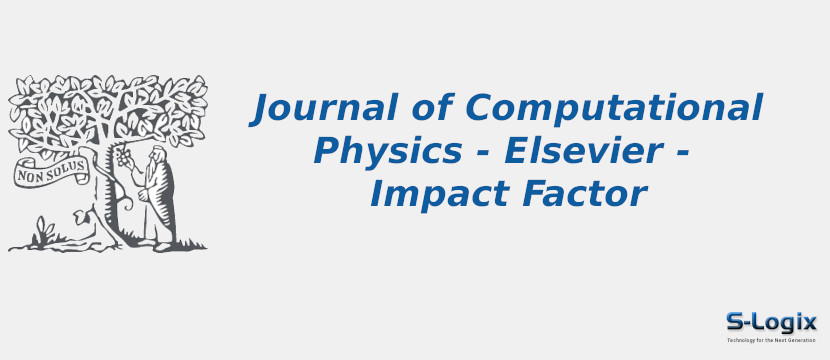The Journal of Computational Physics is a scientific bimonthly publication that covers computational physics comprehensively. The journal focuses on the computational aspects of physical problems, presenting techniques for the numerical solution of mathematical equations across all areas of physics. It seeks to emphasize methods that transcend disciplinary boundaries, fostering interdisciplinary research and collaboration. The journal also includes an open access mirror journal, Journal of Computational Physics: X, which shares the same aims and scope, editorial team, submission system, and rigorous peer-review process.
Objective:
The primary objective of the Journal of Computational Physics is to advance the field of computational physics through the publication of high-quality research. The journal aims to explore and develop numerical methods, algorithms, and computational techniques that improve the understanding and simulation of physical phenomena. By publishing innovative research articles, reviews, and methodologies, the journal addresses the complex challenges in computational physics and promotes the application of computational methods across diverse scientific disciplines.
Interdisciplinary Focus:
The Journal of Computational Physics adopts a broad interdisciplinary approach, welcoming contributions from various scientific and engineering disciplines. This includes, but is not limited to, areas such as fluid dynamics, solid mechanics, quantum physics, astrophysics, materials science, and computational chemistry. The journal encourages research that integrates computational modeling with experimental and theoretical approaches, facilitating breakthroughs in scientific understanding and technological innovation. This interdisciplinary perspective enables researchers to address complex physical problems and develop novel computational solutions.
Global Reach and Impact:
With a global readership and authorship, the Journal of Computational Physics has a significant impact on the scientific community worldwide. Its publications contribute to the dissemination of knowledge and advancements in computational physics. The journal content influences both academic research and industrial applications, driving progress in fields such as aerospace engineering, climate modeling, biomedical simulations, and renewable energy technologies.
High Standards and Rigorous Review:
Maintaining rigorous academic standards, the Journal of Computational Physics conducts a thorough peer-review process. Each submitted manuscript undergoes comprehensive evaluation by experts in the field to ensure the quality, originality, and scientific rigor of the research. This stringent review process upholds the integrity and reputation of the journal, ensuring that only impactful and authoritative contributions are published.
Significance:
The Journal of Computational Physics is pivotal in advancing research and innovation in computational physics. By providing a platform for the publication of cutting-edge research findings and computational methodologies, the journal supports the development of new scientific insights and technological advancements. It serves as a vital resource for researchers, educators, and students interested in leveraging computational techniques to solve complex physical problems and deepen our understanding of the natural world.
Journal Home: Journal Homepage
Editor-in-Chief: Rémi Abgrall
scope:
The Journal of Computational Physics is a prestigious bimonthly publication dedicated to computational physics, covering the numerical solution of mathematical equations across various areas of physics. The journal emphasizes methods that transcend disciplinary boundaries and provides a platform for researchers, practitioners, and scholars to advance computational techniques in physics. Here is an overview of its key focus areas and scope:
1. Computational Methods:
Research on numerical algorithms, techniques, and methodologies for solving physical equations.
Advancements in finite difference, finite element, spectral methods, and other computational techniques.
2. Multi-scale and Multi-physics Modeling:
Exploration of computational approaches for modeling complex physical systems with multiple scales and interacting physics.
Research on coupling different physical phenomena and integrating models across scales.
3. High-Performance Computing:
Advancements in parallel and distributed computing techniques for solving large-scale physics problems.
Research on algorithms optimized for high-performance computing architectures and supercomputers.
4. Fluid Dynamics and Computational Fluid Mechanics:
Exploration of computational methods for studying fluid flow, turbulence, and related phenomena.
Research on fluid-structure interactions, aerodynamics, and hydrodynamics.
5. Computational Solid Mechanics and Materials Science:
Advancements in computational methods for analyzing mechanical behavior, deformation, and failure of solids.
Research on materials modeling, including elasticity, plasticity, fracture mechanics, and materials design.
6. Quantum and Statistical Mechanics:
Exploration of computational approaches for studying quantum systems, statistical ensembles, and many-body problems.
Research on quantum simulations, molecular dynamics, and Monte Carlo methods.
7. Electromagnetics and Computational Optics:
Advancements in computational techniques for solving electromagnetic wave equations and optical systems.
Research on photonics, plasmonics, metamaterials, and computational electromagnetics.
8. Computational Astrophysics and Geophysics:
Exploration of numerical methods for studying astrophysical phenomena, celestial mechanics, and planetary dynamics.
Research on geophysical modeling, seismic simulations, and computational geodynamics.
9. Computational Biology and Biophysics:
Advancements in computational methods applied to biological systems, biomolecular simulations, and biophysical modeling.
Research on protein folding, molecular dynamics, bioinformatics, and systems biology.
10. Machine Learning and Data-driven Physics:
Exploration of machine learning techniques for physics, data-driven modeling, and predictive analytics.
Research on integrating data science methods with traditional physics simulations and experimental data.
Print ISSN: 0021-9991
Electronic ISSN: 1090-2716
Abstracting and Indexing: Science Citation Index Expanded, Scopus.
Imapct Factor 2023: 4.1
Subject Area and Category: Computer Sciences, Physics and Space Sciences
Publication Frequency: Semimonthly
H Index: 288
Q1: Computer Science Applications
Q2:
Q3:
Q4:
Cite Score: 7.6
SNIP: 1.678
Journal Rank(SJR): 1.679
Latest Articles: Latest Articles in Journal of Computational Physics
Guidelines for Authors: Journal of Computational Physics Author Guidelines
Paper Submissions: Paper Submissions in Journal of Computational Physics
Publisher: Academic Press Inc, Elsevier Science
Country: USA
